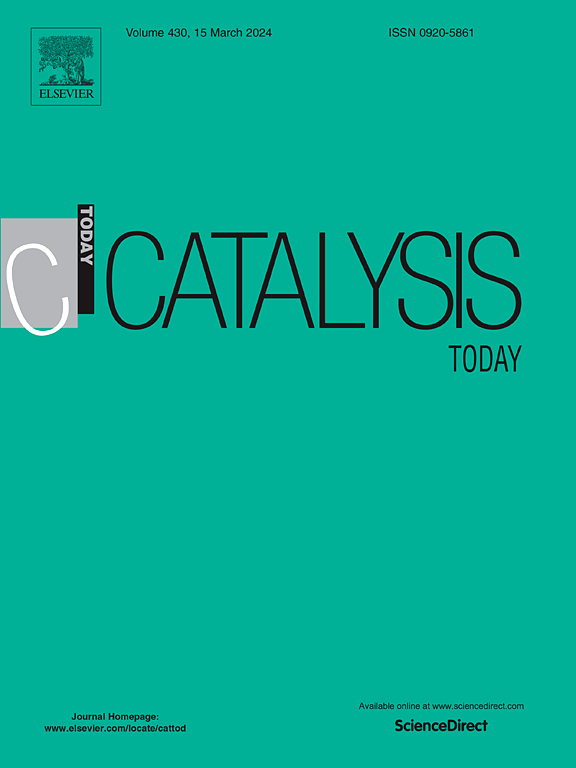Effect of rhenium on the activity of ZrO2-supported copper catalysts for hydrodeoxygenation of m-cresol
IF 5.2
2区 化学
Q1 CHEMISTRY, APPLIED
引用次数: 0
Abstract
This work studies the effect of adding different loadings of Re on the performance of ZrO2-supported Cu catalysts for hydrodeoxygenation (HDO) of m-cresol. H2-TPR and XPS show a synergistic effect between Cu and Re, decreasing the reduction temperature of both metals and promoting the reduction of Re oxide. Moreover, the addition of Re changes Cu dispersion and acid properties of all catalysts. High Re contents results in a coverage of Cu surface. Catalytic tests reveal that HDO reaction rate and product distribution vary considerably depending on the Re loading. Cu catalyst was inactive for HDO reaction, forming only hydrogenation products. In contrast, Re catalyst stood out for its high capacity to promote HDO reaction, with significant production of toluene. For the bimetallic catalysts, the addition of Re increases HDO reaction rate from 0 to 0.39 mmol gmetal−1 min−1 and the selectivity towards toluene (0–82.6 %), whereas the formation of hydrogenation and dehydration products decreases.
铼对 ZrO2-supported 铜催化剂在间甲酚加氢脱氧反应中活性的影响
这项工作研究了添加不同负载量的 Re 对 ZrO2-supported Cu 催化剂用于间甲酚加氢脱氧(HDO)性能的影响。H2-TPR 和 XPS 显示了 Cu 和 Re 之间的协同效应,降低了两种金属的还原温度,促进了 Re 氧化物的还原。此外,Re 的加入改变了铜的分散性和所有催化剂的酸性。高 Re 含量会导致 Cu 表面的覆盖。催化测试表明,HDO 反应速率和产物分布随 Re 含量的不同而有很大差异。Cu 催化剂在 HDO 反应中不活跃,只形成氢化产物。相比之下,Re 催化剂促进 HDO 反应的能力较强,可产生大量甲苯。对于双金属催化剂,添加 Re 会使 HDO 反应速率从 0 mmol gmetal-1 min-1 增加到 0.39 mmol gmetal-1 min-1,对甲苯的选择性也会增加(0-82.6%),而氢化和脱水产物的生成则会减少。
本文章由计算机程序翻译,如有差异,请以英文原文为准。
求助全文
约1分钟内获得全文
求助全文
来源期刊

Catalysis Today
化学-工程:化工
CiteScore
11.50
自引率
3.80%
发文量
573
审稿时长
2.9 months
期刊介绍:
Catalysis Today focuses on the rapid publication of original invited papers devoted to currently important topics in catalysis and related subjects. The journal only publishes special issues (Proposing a Catalysis Today Special Issue), each of which is supervised by Guest Editors who recruit individual papers and oversee the peer review process. Catalysis Today offers researchers in the field of catalysis in-depth overviews of topical issues.
Both fundamental and applied aspects of catalysis are covered. Subjects such as catalysis of immobilized organometallic and biocatalytic systems are welcome. Subjects related to catalysis such as experimental techniques, adsorption, process technology, synthesis, in situ characterization, computational, theoretical modeling, imaging and others are included if there is a clear relationship to catalysis.
 求助内容:
求助内容: 应助结果提醒方式:
应助结果提醒方式:


